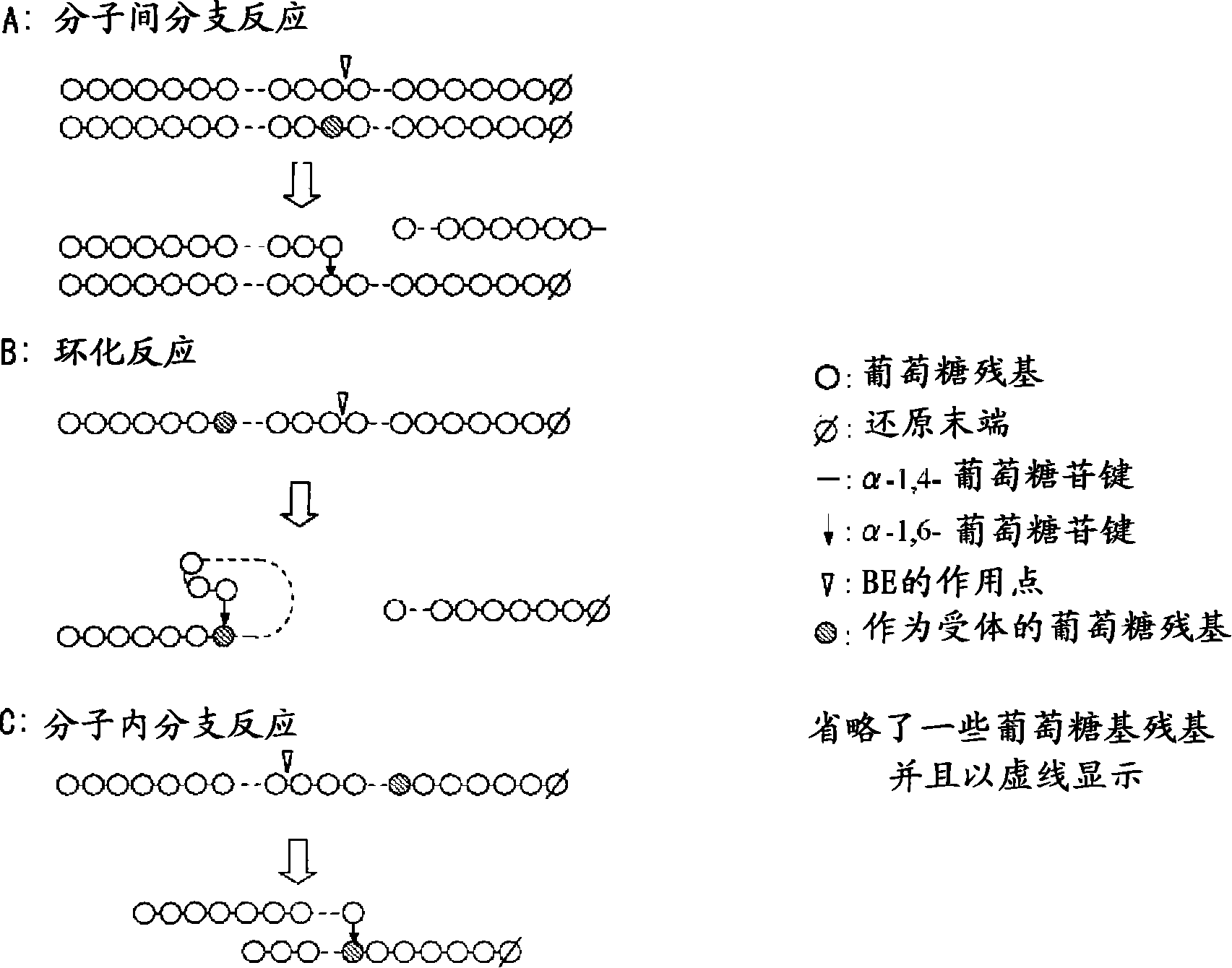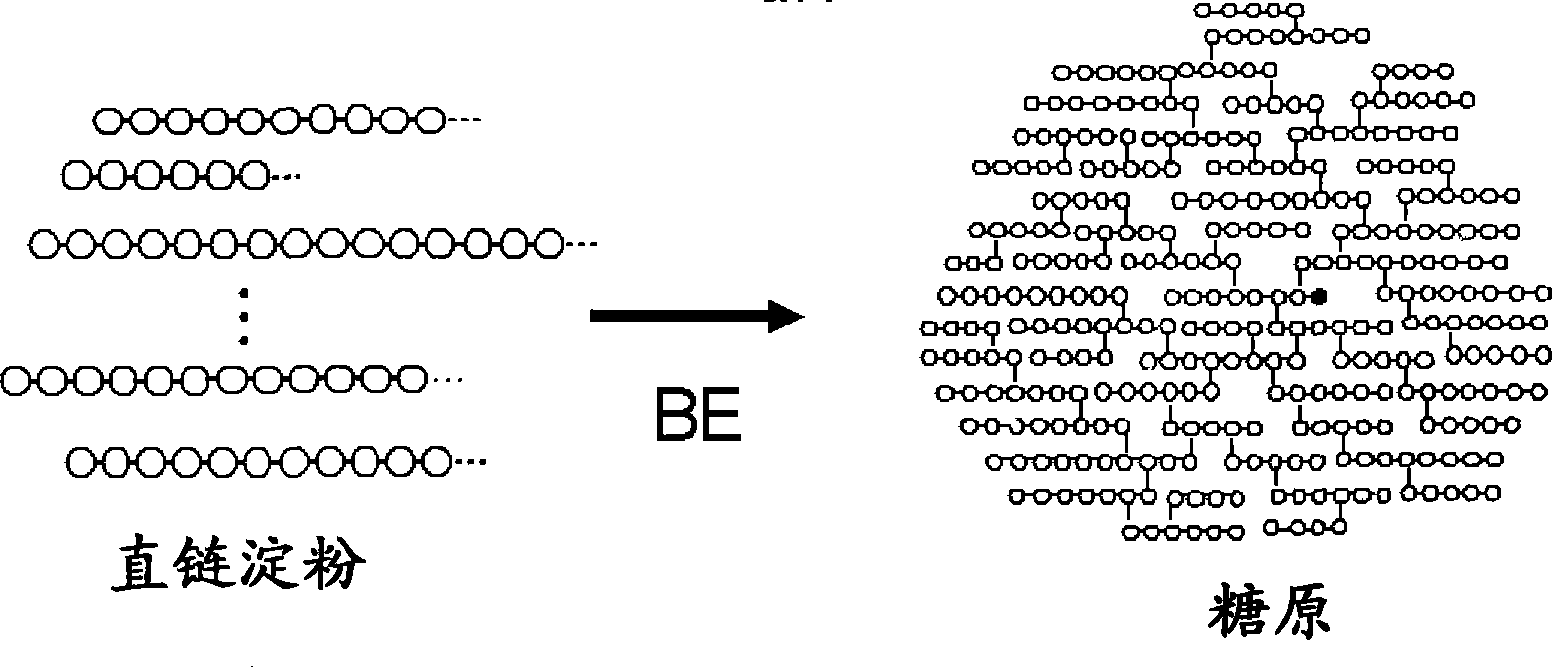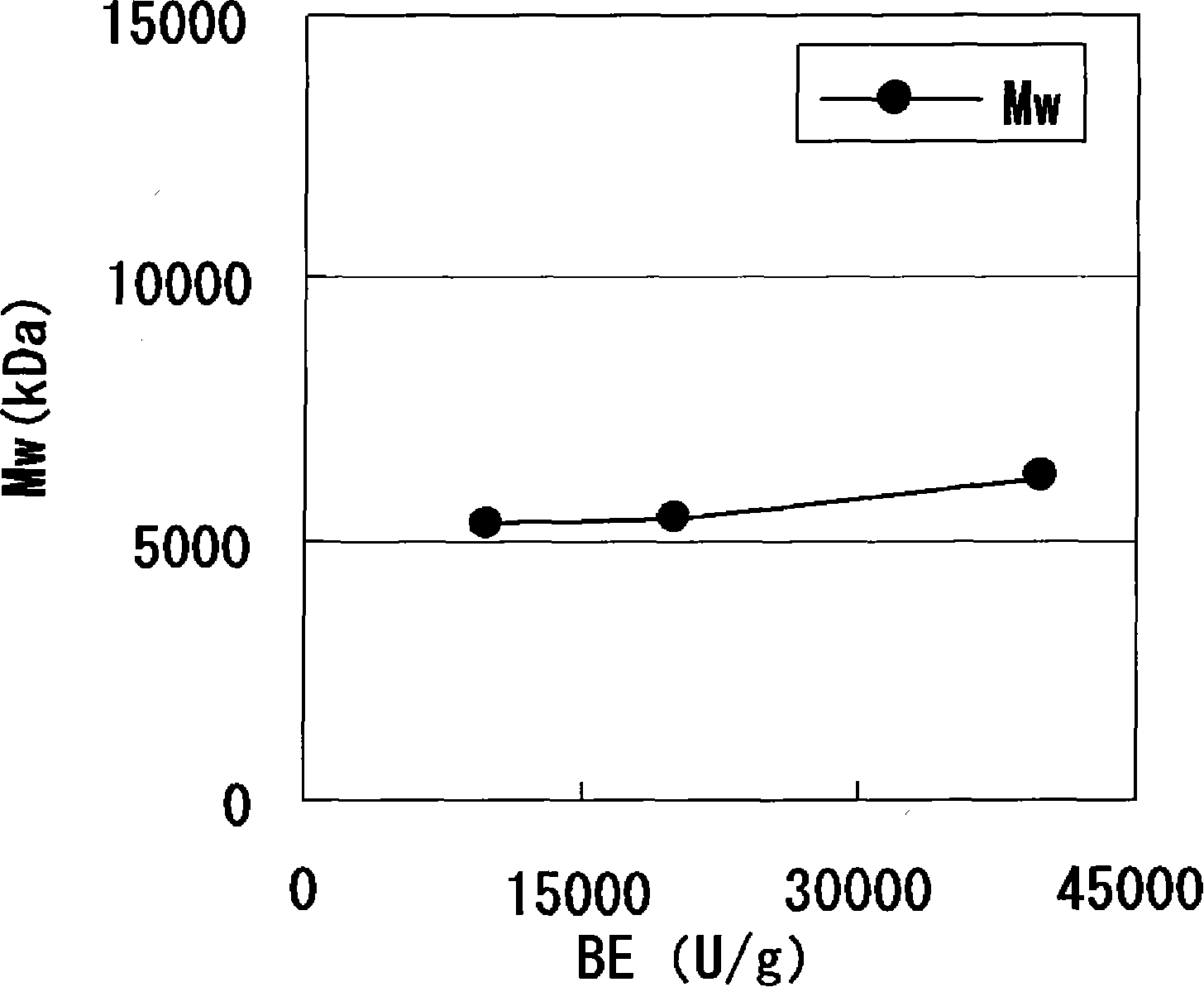Method of producing glycogen
A technology of glycogen and glucan, applied in the field of producing high molecular weight highly branched α-glucan
- Summary
- Abstract
- Description
- Claims
- Application Information
AI Technical Summary
Problems solved by technology
Method used
Image
Examples
Embodiment 1
[0247] (Production Example 1: Recombinant production of BE derived from the wind-producing liquid bacteria VF5)
[0248] (A) Preparation of VF5 BE gene of P. aeruginosa
[0249] The gene encoding the amino acid sequence of SEQ ID NO:2 (SEQ ID NO:1) was chemically synthesized. The SD sequence was added upstream of the translation initiation codon of the gene, and a BamHI site was provided upstream of the SD sequence. An EcoRI site is provided downstream of the translation stop codon. This synthetic gene was cleaved with BamHI and EcoRI to prepare a gene fragment, which was then ligated into pUC19 (manufactured by Takara Shuzo Co., Ltd.) previously cleaved with BamHI and EcoRI using T4-DNA ligase to obtain plasmid pAQBE1.
[0250] (B) Expression of the BE gene of A. rhizogenes in Escherichia coli
[0251] Escherichia coli TG-1 was transformed with this plasmid, and the transformants were diluted and extracted on LB agar medium (100 μg / ml ampicillin, 1% tryptone manufactured b...
Embodiment 2
[0253] (Production Example 2: Recombinant production of BE derived from Bacillus stearothermophilus TRBE 14)
[0254] BE derived from Bacillus stearothermophilus TRBE 14 was recombinantly produced by the method shown in Non-Patent Document 12 from the Escherichia coli TG-1 strain carrying the plasmid pUBE821 shown in this document.
Embodiment 3
[0255] (Production Example 3: Recombinant production of MalQ derived from Thermus aquaticus (hereinafter referred to as TaqMalQ))
[0256] TaqMalQ was recombinantly produced by the method shown in Terada et al. (Applied and Environmental Microbillogy, vol. 65, pp. 910-915 (1999)) from the Escherichia coli MC1061 strain carrying the plasmid pFGQ8 shown in this document.
PUM
 Login to View More
Login to View More Abstract
Description
Claims
Application Information
 Login to View More
Login to View More - R&D
- Intellectual Property
- Life Sciences
- Materials
- Tech Scout
- Unparalleled Data Quality
- Higher Quality Content
- 60% Fewer Hallucinations
Browse by: Latest US Patents, China's latest patents, Technical Efficacy Thesaurus, Application Domain, Technology Topic, Popular Technical Reports.
© 2025 PatSnap. All rights reserved.Legal|Privacy policy|Modern Slavery Act Transparency Statement|Sitemap|About US| Contact US: help@patsnap.com



